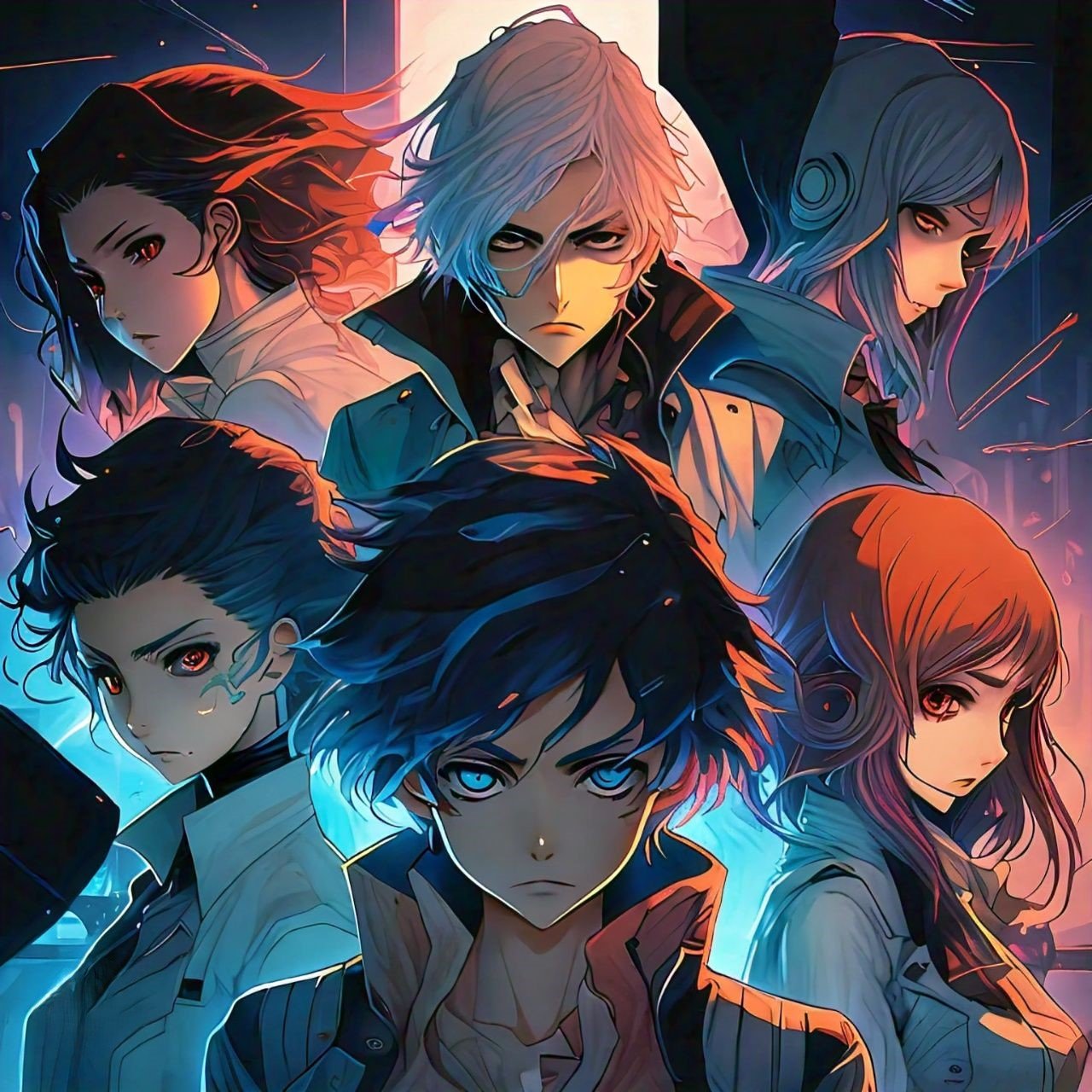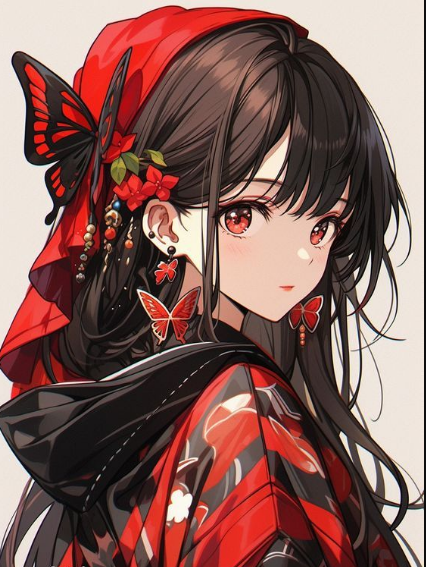Random Stories
The Suspicious Six: Uncovering the Secrets of Anime:6tbztsekyf0= sus

Introduction to Anime:6tbztsekyf0= sus
Anime has taken the world by storm, captivating millions with its vibrant art styles and compelling storytelling. However, beneath the surface of this beloved medium lies a labyrinth of controversial tropes that provoke debate among fans and critics alike. You’re not alone if you’ve ever scratched your head over specific themes or character representations in anime:6tbztsekyf0= sus. The genre is rife with peculiar patterns that raise eyebrows and challenge perceptions.
In this exploration, we delve into the Suspicious Six—those problematic elements that linger in many popular series. From fan service to gender stereotypes, these tropes can elicit strong reactions from audiences around the globe. So brace yourself as we uncover what makes these aspects contentious within the anime community!
The Suspicious Six – the Most Controversial Tropes in Anime:6tbztsekyf0= sus
Anime has a rich tapestry of storytelling, but it often weaves in some controversial threads. The Suspicious Six highlights the most contentious tropes that spark debate among fans and critics alike.
These elements can range from fan service to portrayals of violence. While some see them as mere entertainment, others view them critically. Each trope carries its baggage, influencing how audiences perceive characters and narratives.
For instance, fan service might seem harmless at first glance. Yet, over time, it can shift expectations regarding gender roles and personal interactions within stories.
Tropes like cultural appropriation also bring severe discussions about representation in anime. They force us to question who gets to tell specific stories and how they impact different cultures globally.
In exploring these themes further, it’s clear that the conversation around these tropes still needs to be settled.
Fan Service: From Innocent to Inappropriate
Fan service has been a staple in anime for years. It often starts innocently enough, with playful nods to the audience. These moments can feel like a fun inside joke.
However, things can take a turn quickly. What was once light-hearted may become overtly sexualized. Characters designed primarily for shock value overshadow genuine storytelling.
This shift raises eyebrows among viewers. Some appreciate the added spice, while others find it distracting or offensive. The line between homage and objectification is thin.
The impact on younger audiences must also be addressed. When they see such portrayals, impressionable fans might develop skewed perceptions of relationships and consent.
Fan service remains contentious in anime culture—sparking endless debate about its role and appropriateness in modern storytelling.
Over-sexualization of Female Characters
The over-sexualization of female characters in anime is a topic that ignites passionate discussions among fans and critics alike.
Many series depict women with exaggerated features, often reducing them to mere objects of desire. This portrayal can overshadow their personalities and narratives. Instead of being multifaceted characters, they are usually defined by their looks.
This trend sends powerful messages about femininity and attractiveness, especially to younger viewers who may internalize these ideals. It creates unrealistic standards that can affect self-esteem and body image perceptions.
Furthermore, the sexualized representation frequently doesn’t align with the plot or character development. In some cases, it distracts from meaningful storytelling.
Anime creators must consider how these portrayals impact audiences while striving for authentic characterizations that reflect diverse experiences beyond physical appearances.
Violence and Gore in Anime:6tbztsekyf0= sus
Anime often walks a tightrope when it comes to violence and gore. For some, it’s an essential storytelling device that heightens emotional stakes. The shock factor can drive narratives forward in unexpected ways.
Yet, the graphic depictions of brutality raise eyebrows—specific series revel in bloodshed, showcasing gruesome scenes that might not sit well with all viewers. What’s meant to be thrilling can sometimes cross over into gratuitous territory.
It raises questions about desensitization. Are audiences becoming numb to violent content? Or does this form of expression allow deeper explorations of human nature?
Critics argue that excessive violence overshadows character development and plot depth. While fans may defend their favorite shows as artistic expressions, others perceive them as dangerous influences on impressionable minds.
The debate continues within the community, reflecting broader societal concerns surrounding media consumption and its impact on behavior and attitudes toward real-life violence.
Cultural Appropriation and Racism in Anime:6tbztsekyf0= sus
Cultural appropriation is a hot topic in the world of anime:6tbztsekyf0= sus. Many series borrow elements from various cultures but often need help authentically representing them.
This lack of authenticity can lead to stereotypes that perpetuate racism. Characters might be designed with exaggerated features or dress, reinforcing harmful clichés rather than celebrating diverse backgrounds.
Some fans argue that these portrayals are disrespectful and diminish cultural significance. They feel anime creators should approach other cultures with sensitivity and understanding.
Others contend that anime is an art form meant for exploration and experimentation. This perspective raises questions about where appreciation ends, and exploitation begins.
The dialogue around this issue continues to evolve as audiences demand a more thoughtful representation of their favorite shows. Awareness grows, pushing creators and consumers toward a deeper understanding of cultural nuances in storytelling.
Gender Stereotypes in Anime:6tbztsekyf0= sus
Gender stereotypes in anime often manifest in predictable character archetypes. The “damsel in distress” trope is a common sight. Female characters frequently rely on male heroes to rescue them, reinforcing traditional gender roles.
Conversely, male characters are often depicted as strong and stoic. They embody traits like aggression and dominance. These portrayals can limit the complexity of both genders.
Moreover, female protagonists may be hyper-feminized or objectified. This overemphasis on appearance overshadows their abilities and intellect, conveying that looks matter more than skills.
Critics argue these clichés hinder progress toward gender equality in storytelling. As audiences become more aware, they demand richer narratives that challenge these stereotypes instead of perpetuating them.
The conversation around this topic continues to evolve as new creators emerge with fresh perspectives on gender representation within anime’s vibrant landscape.
How Fans and Critics React to These Tropes
Fans and critics often disagree when discussing controversial anime tropes. Some viewers embrace these elements, arguing they add depth to the storytelling. Others feel deeply uncomfortable, claiming they perpetuate harmful stereotypes.
Online forums buzz with passionate debates. Fans share their favorite shows while dissecting problematic aspects. Critics publish articles drawing attention to the implications of over-sexualization or violence.
Social media platforms amplify these discussions, allowing diverse voices to emerge. Hashtags trend as people rally against cultural appropriation in specific series or highlight the adverse effects on societal perceptions.
Many fans advocate for change within the industry. They call for more balanced representation and thoughtful narratives that challenge existing norms rather than reinforce them.
The discourse surrounding these tropes is complex and ever-evolving, reflecting broader conversations about culture and identity in society today.
Impact on Society and the Ongoing Debate
The impact of controversial anime tropes on society is profound. They shape perceptions and behavior, often reflecting or distorting reality. Audiences engage with these narratives in ways that can reinforce harmful stereotypes.
Debates surrounding these issues are heated. Fans argue passionately about the merits of artistic freedom versus the responsibility creators hold. Some believe challenging storytelling should not be censored, while others advocate for more mindful representations.
Social media platforms amplify these discussions, allowing diverse voices to share their perspectives. Criticism can lead to change within the industry as creators become aware of audience concerns.
Yet, anime culture has tension between tradition and modern sensibilities. As global audiences consume this medium, differing values collide, revealing deeper societal divides regarding gender roles and representation. This ongoing dialogue continues to evolve alongside cultural shifts worldwide.
Conclusion
Anime has become a global phenomenon, offering various genres and storytelling styles. Yet, it’s essential to acknowledge the darker undercurrents that flow through many series. The Suspicious Six highlights some of the most controversial tropes in anime: fan service, over-sexualization of female characters, graphic violence, and gore, cultural appropriation, racism, and gender stereotypes.
These issues are not just empty critiques; they resonate within broader societal discussions. Fans often find themselves torn between their love for this art form and the troubling elements it presents. Critics voice concerns about how these portrayals can shape perceptions and attitudes.
As viewers engage with these narratives, dialogue evolves around responsibility in media representation. Both creators and audiences must navigate this landscape thoughtfully.
The conversation surrounding Anime:6tbztsekyf0= sus is ongoing. By bringing awareness to these topics, fans can contribute to a more nuanced appreciation of anime while advocating for change where it’s needed most.
Stay connected with Ms. Magazine for the latest empowering insights and updates that are worth your attention!











